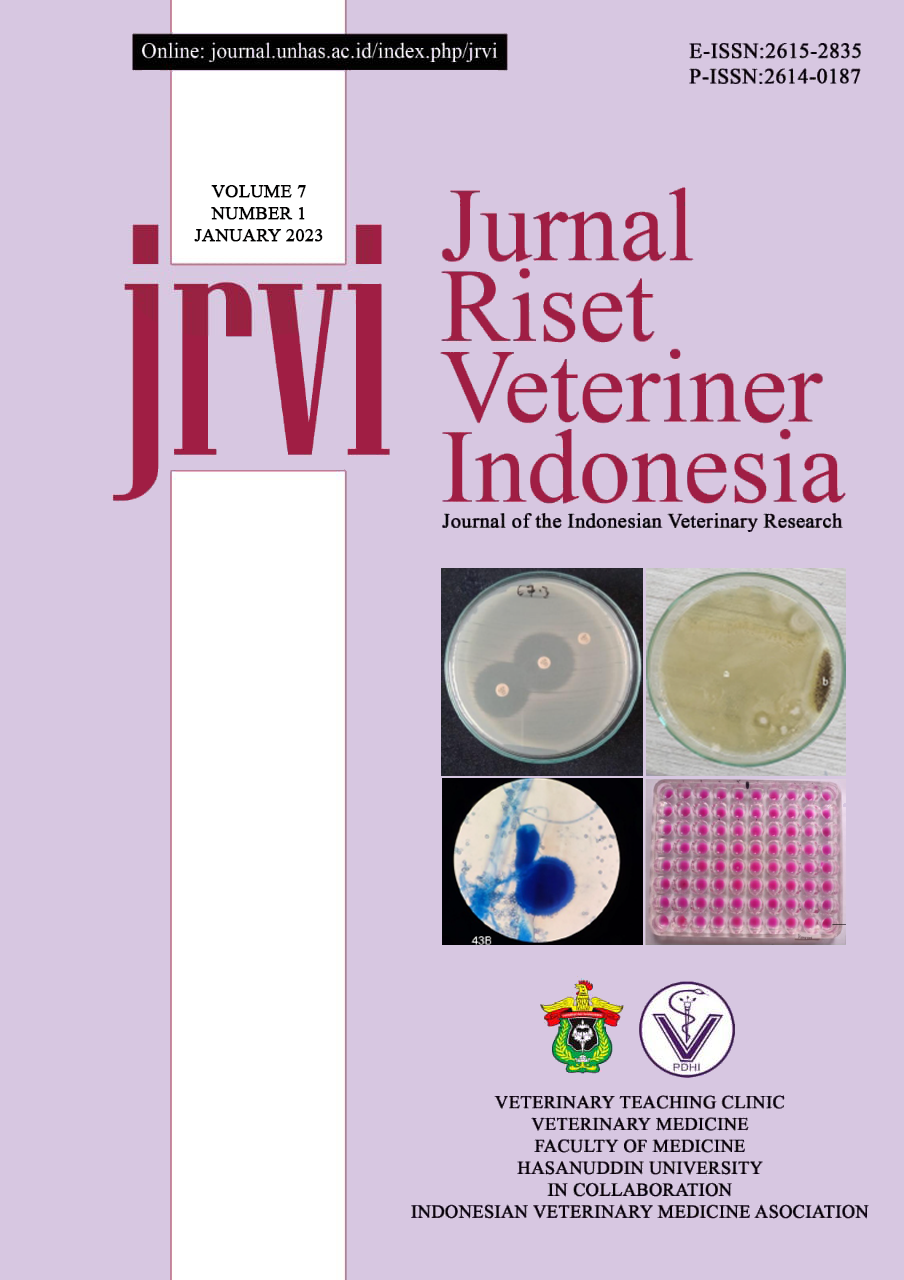Abstract
The purpose of this study is to identify the type, intensity, and prevalence of intestinal helminth infection in confiscated Long-tailed macaque (Macaca fascicularis). Thirty samples of feces from long-tailed monkeys (18 females and 12 males), with a total of 7 Dancing Monkeys, 5 Human Wildlife Conflict groups, and 18 Pet macaque groups. West Java's Cikole Animal Hospital collected samples aseptically, labeled them, and then analyzed them in its clinical laboratory. Using the floating method, samples were evaluated to determine the intensity of infection and the identification of parasites. The incidence of endoparasites in confiscated macaques is 20 %. The prevalence of endoparasites was highest in the individual group of pet macaques, at 27.78 %, and lowest in the Dancing Monkey group, at 14.29%. The prevalence of endoparasite infection was highest in the pet macaques, at 83.33 percent, compared to 16.67% among the dancing monkeys. In the human-infection conflict group, no endoparasite infections were detected. The prevalence of endoparasites in positive infected infant samples was as high as 75%, but the prevalence in sub-adult and adult age groups was 11% and 14%, respectively. From the number of positive samples, the male individual group had the highest percentage, 66.66 %, while the female individual group had the lowest proportion, 33.33 %. In general, the pattern of infection is the same, consisting of 50% double infection types and 50% single infection types. The average intensity of helminth infection in Strongyle spp. was 45.50±25.10 eggs per gram of feces, while in Trichuris spp., it was 120.00±0.00 eggs per gram of feces. Strongyle spp. infects 100% of the positive samples, while Trichuris spp. infects 50% of the samples.
Keywords: Macaca fascicularis, Confiscated macaque, Endoparasite, Prevalence

This work is licensed under a Creative Commons Attribution-NonCommercial 4.0 International License.

